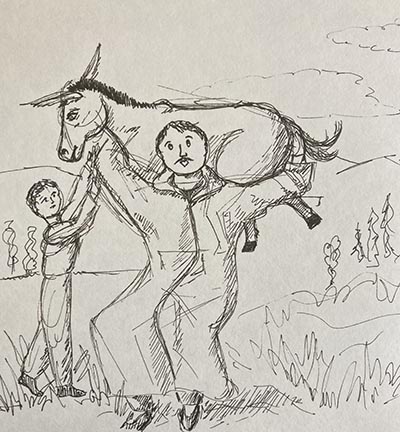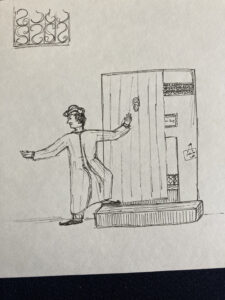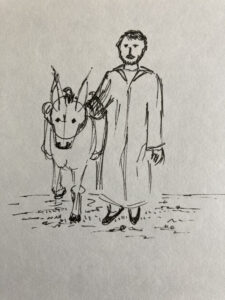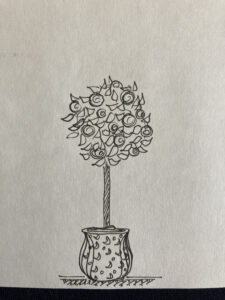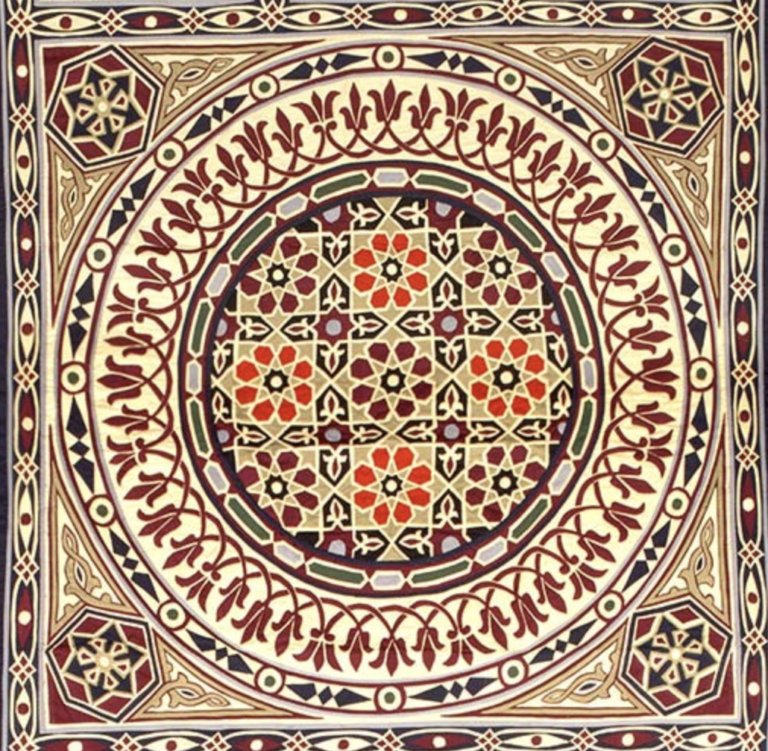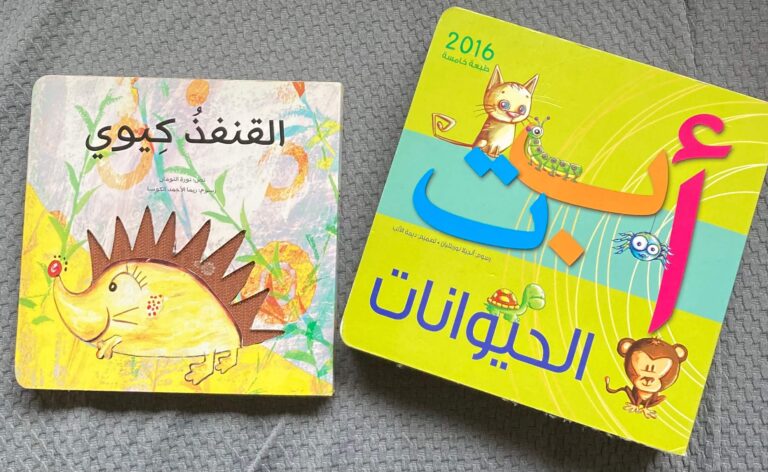Juha the Trickster
In honor of Salma Khadra Jayyusi, who passed away earlier this year, I’d like to revisit Juha the famous trickster character. I was fortunate enough to study Arabic langugage and literature during the years when Jayyusi’s PROTA project was bringing many works to the attention of readers in English. One of these works is published as Tales of Juha: Classic Arab Folk Humor (Northampton, MA: Interlink, 2007). This is a great compilation and rendition of many classic Juha stories. I’ll include a tiny one here as a sample (from p. 15).
Juha went for a swim in the river, undressing and leaving his clothes on the bank. Some thief or other stole them, and Juha had to go home completely naked. A few days later, he went to the river and took a dip fully clothed. His friends, seeing him, asked him what he thought he was doing.
Better for my clothes to get wet on me,” he answered, “than be dry on someone else!”
p. 15 Jayussi, Tales of Juha
Tales of Juha (Juḥā) grow out of a long cultural tradition of Middle Eastern and North African storytelling. They appear in cultures of various languages and religions throughout the Mediterranean region. Many of the stories enjoy an especially wide audience due to characteristics of the stories such as simplicity, brevity, and popular characters and subject matter. Some of the stories are present from the West of China to Eastern Europe, and from the Arabian or Persian Gulf to the Atlantic Ocean and the Mediterranean Sea. Juha’s nationality, language, and religion, not to mention his name, vary according to the storyteller. He also moves through time, meeting famous people from the time of Harūn al-Rashīd to Genghis Khan and Tamerlane, and even traveling to outer space.
As a college student at Emory University, I wrote my honor’s thesis on Moroccan Juha stories, having conducted research in Morocco for four weeks, asking all kinds of people about Juha stories. Of the 113 individuals who participated in my study, one obliging individual (who shall remain anonymous) offered to write down a Juha story. In January 2004, he wrote out his story in my notebook, titled “Story of the Appearance of Juha” (or “Juha Appears,” as I’ve rendered it below). This is written in Modern Standard Arabic and can be used by Arabic learners. Be warned that this story is not politically correct. It includes violence and discrimination against women, a Jew as the butt of a joke, and slightly scatological humor. Thanks to Lena Krause for helping with typing and translation!
Further Reading
For Sicilian Juha stories, see Maria vera Civello Francesco Crescimone, Giufà como lo raccontano gli altri (Ragusa: Sicilia Punto L Edizioni, 2001). For Jewish Juha stories, see Matilda Koén-Sarano, Folktales of Joha: Jewish Trickster (Philadelphia: The Jewish Publication Society, 2003). For a Sufi take, see books by Idries Shah. For kids, I’m happy to recommend Riding a Donkey Backwards: Wise and Foolish Tales of Mulla Nasruddin (Somerville, MA: Candlewick Press, 2019). It made my 6-year-old laugh 🙂
Images: All drawings from Melanie Magidow’s notebook during her 2003-2004 Juha Stories research trip in Morocco
For other memorials of Salma Khadra Jayyusi, see:
رحيل سلمى الخضراء الجيوسي: سفيرة الأدب العربي إلى العالم الأنغلوسكسوني

